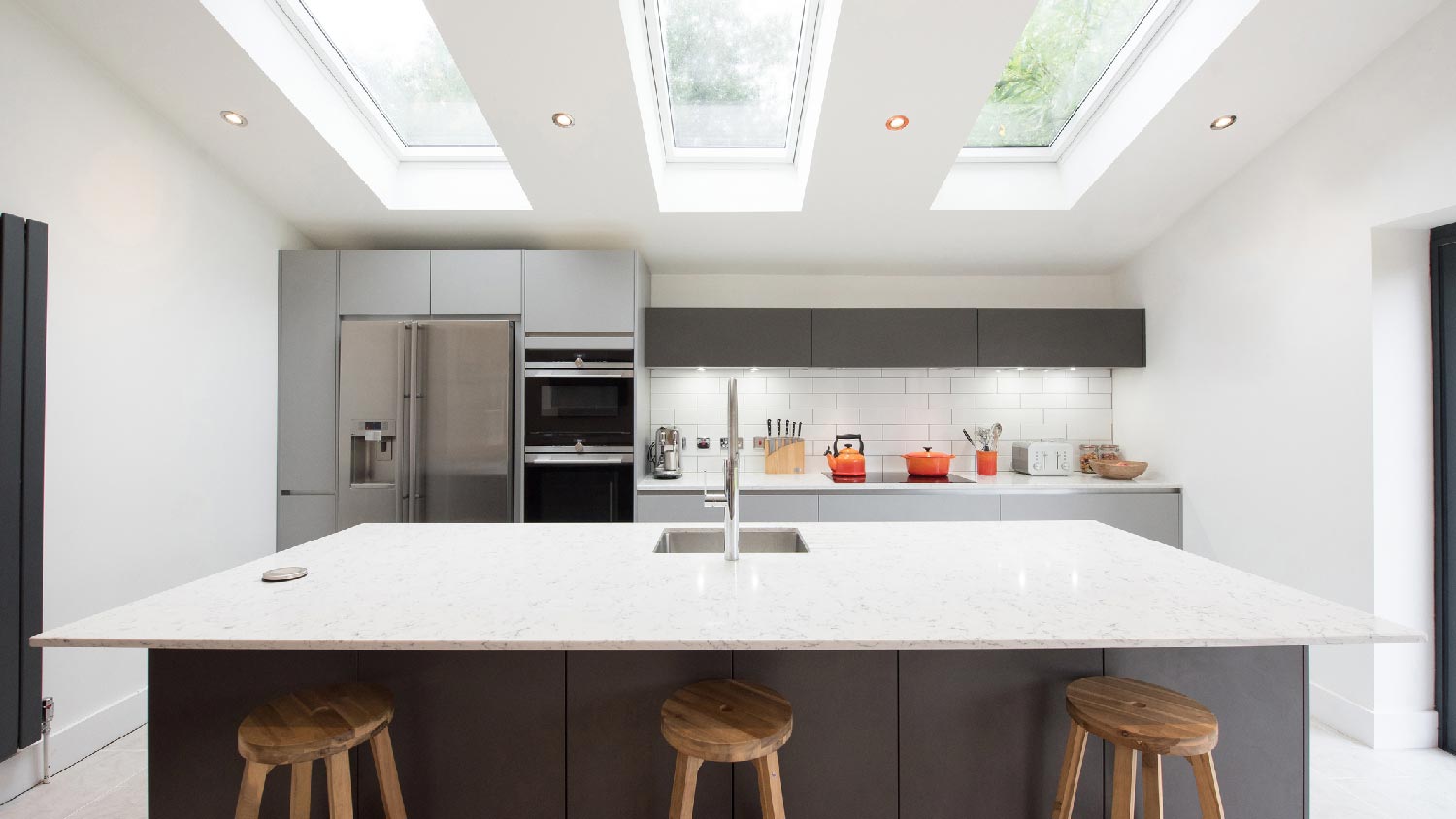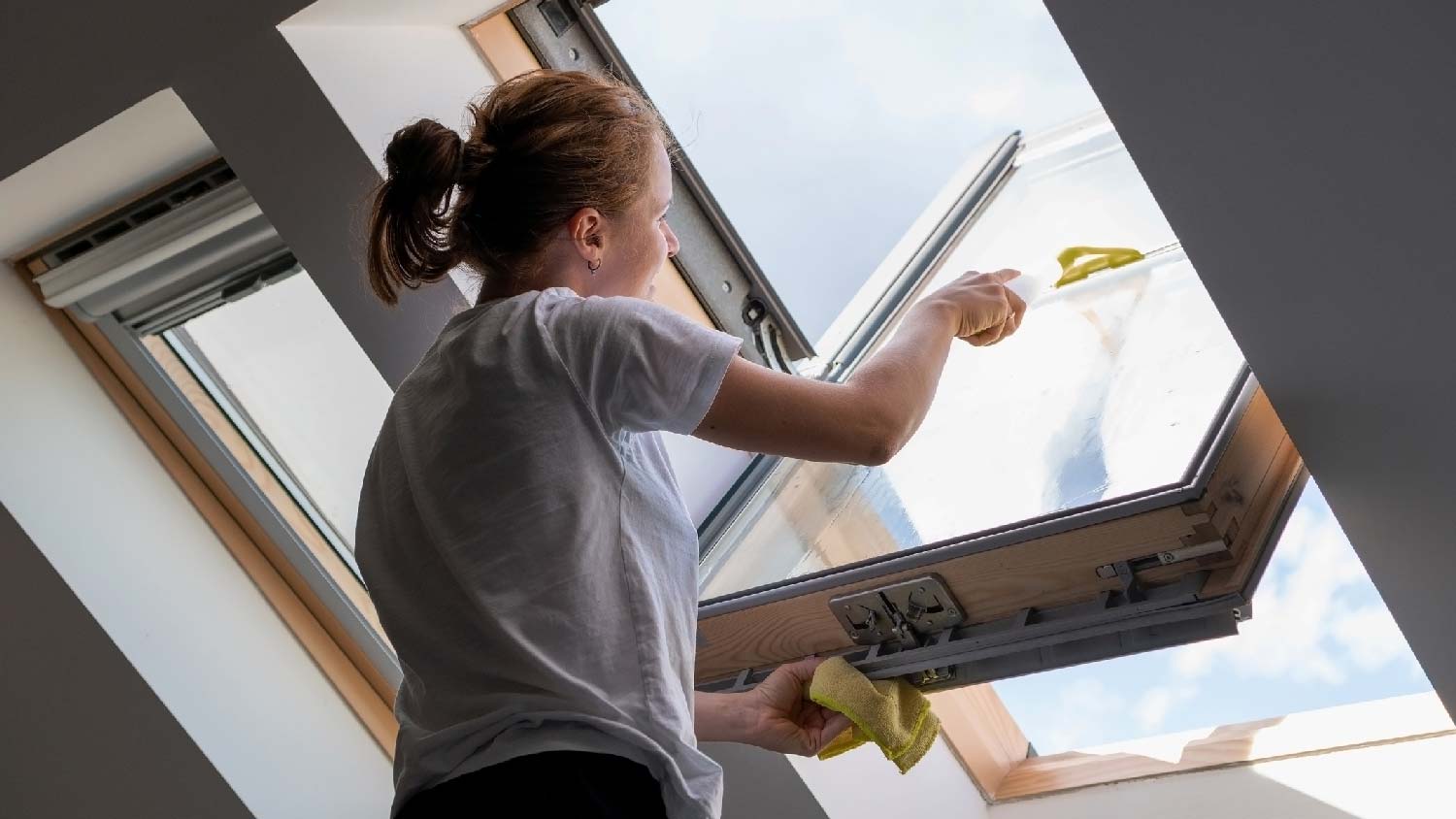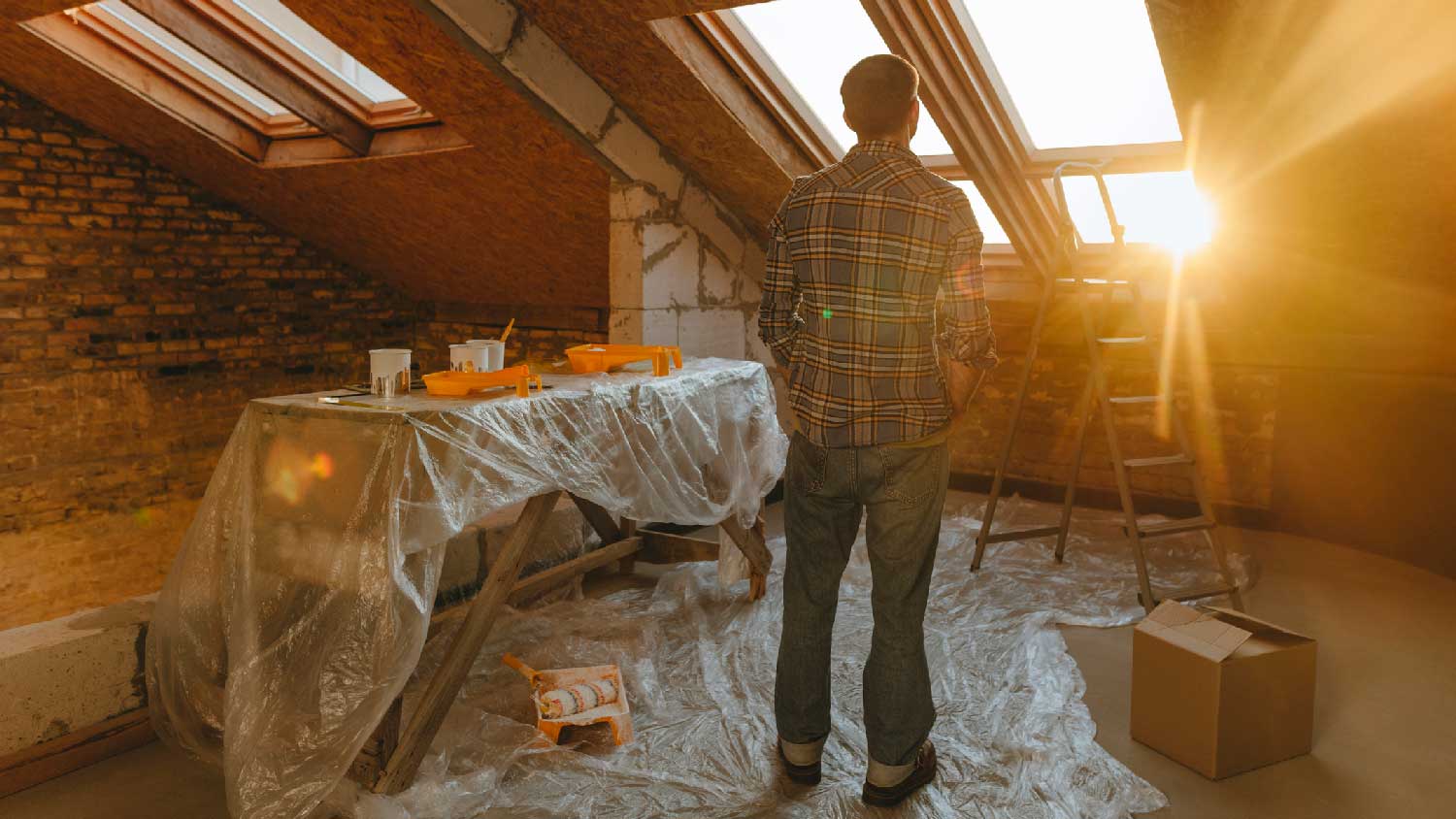Pros and Cons of Skylights
Not to throw shade, but skylights aren’t the best fit for every home


Skylights bring in more natural light than windows, and if they open, they improve ventilation.
Skylights are difficult to clean, and they can introduce UV rays that can fade your furnishings.
Skylight installation costs an average of $1,907.
The average lifespan for a skylight is about 25 years.
Skylights bathe your home in natural light while providing enviable glimpses of the sky. But they’re not without their drawbacks, including the potential for heat loss in winter. This guide explores all of the pros and cons of skylights to help you decide if they’re right for your home.
What Are Skylights?
Designed to bring natural light into a space, skylights are windows installed in the roof. Skylights can be used with traditional ceilings, vaulted ceilings, and sloped ceilings. People commonly place them in great rooms, kitchens, bedrooms, bathrooms, entryways, and closets.
| Pros of Skylights | Cons of Skylights |
|---|---|
| More natural light | Difficult to clean |
| More fresh air | Heat loss |
| Brightens dark spaces | UV exposure |
Pros of Skylights

From making a small space brighter to adding a wow factor to a grand room, a skylight is considered a premium feature. Here’s a closer look at some of the key benefits of a skylight:
1. Natural Light
Skylights allow natural light to enter a room from above, which can make the space seem bigger and brighter. According to the U.S. Department of Energy, skylights on north-facing roofs are best for providing constant light without too much warmth, while skylights on south-facing roofs are ideal if you want to take advantage of passive solar heat.
2. Fresh Air
Skylights that open and close increase airflow in a room. In fact, skylights are commonly installed in bathrooms and other airtight spaces to provide ventilation. And a skylight's position on the roof can provide more privacy in a bathroom or bedroom compared to an eye-level window.
3. Access to Light in Areas That Can't Fit Windows
Skylights are great for brightening dark corners of a home where windows can't fit. For example, a dark stairwell or hallway located in the center of a home can be brightened with a skylight. The same goes for pantries or closets that could benefit from some sunlight and fresh air.
4. Aesthetic Appeal
A well-placed skylight can become the visual focus of a room. Skylights are associated with high-end architecture. In addition, various skylight sizes can provide views of the sky and surrounding scenery that you simply can't achieve with windows.
Cons of Skylights

Is it really all sunshine with skylights? Some homeowners may find that the issues caused by skylights don't justify the benefits.
1. Difficult to Clean
A skylight's positioning can make it much more difficult to clean than a regular window. Skylights located on vaulted or high ceilings can generally only be accessed with a ladder. For homeowners, that means climbing every time you want to wipe down the glass. For exterior cleaning, it's necessary to access the skylight from the roof regardless of ceiling height. Homeowners will regularly need to clear away leaves, branches, and debris that fall on a skylight.
2. Heat Loss
While sunlight pouring in from a skylight creates natural heat on a bright day, skylights can actually cause heat loss in your home during the winter. As a much stronger heat conductor than ordinary roofing materials, a glass skylight that's been cut into the roof can allow heat to escape outside. While heat loss can be minimal when you have a thermally broken skylight that's been installed with materials with low thermal conductivity between its inner and outer parts, it's almost impossible to bring heat loss to zero.
3. Glare
The placement and angle of skylights can create unanticipated glare in a room. Natural light streaming directly over a television or computer can make it difficult to see what's happening on the screen. In smaller spaces, glare can make a room feel hot and stuffy. Fortunately, a professional skylight installer near you can design and install skylights with proper angling and shading for glare control.
4. UV Exposure
Prolonged exposure to sunlight could harm some items inside your home. Flooring, couch fabrics, and artwork could all fade or degrade faster due to overhead UV rays. But keep in mind that many modern skylights have special coatings designed to block out UV rays.
5. Malfunctions or Installation Issues
Cutting a hole in your roof to install a skylight makes your home more vulnerable to water damage. If a skylight is installed improperly, your home is at risk for leaking and moisture issues. Professional installation and proper flashing dramatically reduce the risk of problems with your skylight.
Alternatives to Skylights
If you're on the fence about adding a skylight to your home, consider these alternatives that also increase natural light.
Sun Tunnels
Like skylights, sun tunnels also bring light from your roof to your interior space. However, sun tunnels use a rooftop dome that directs sunlight into your home via a reflective tube. Sun tunnels offer diffused light as opposed to the direct sun you get with a skylight. Additionally, their design minimizes heat transfer. And while skylight installation costs an average of $1,907, sky tunnels generally cost between $1,000 and $1,500.
Artificial Skylights
If you're looking for a way to add overhead light without cutting into your roof, an artificial skylight could work. Artificial skylights are LED light panels that are installed on a ceiling. Models range from mountable panels to high-tech systems that artificially reproduce natural sunlight and sky views.
Are Skylights Right for You?
When reviewing the pros and cons of skylights, it's important to consider the unique features of your space. If the goal is flooding a room with warm, natural light, a skylight is the perfect option. Skylights are also ideal for brightening up dark spaces or ventilating enclosed spaces. However, homeowners need to keep up with routine skylight inspections and maintenance and to quickly deal with any leaks or moisture issues that may arise.
It's also important to keep your long-term plans for your home in mind. Do skylights add value to a home? Yes, skylights generally add curb appeal and value to a home when you're trying to sell it. But potential buyers might be turned off by poorly maintained skylights, or ones that are nearing the end of their lifespan.
Frequently Asked Questions
The average lifespan for skylights is around 25 years. Newer, high-end skylights on the market today can generally last up to 30 years. But a lower-quality skylight or one that hasn't been professionally installed might only give you eight to 10 years before failing.
Yes, permits are generally required when adding a skylight because the installation will alter the structure of your home's roof. The best time to add a skylight is when you're getting your roof replaced because your roofing contractor can work skylight holes into the design.
An improperly installed skylight could potentially impact your roof's warranty. This happens because roofing penetration is necessary during skylight installation. Check your warranty information to verify. In most cases, having skylights professionally installed with proof that flashing is being done to specifications can be enough to preserve your roof's warranty.















